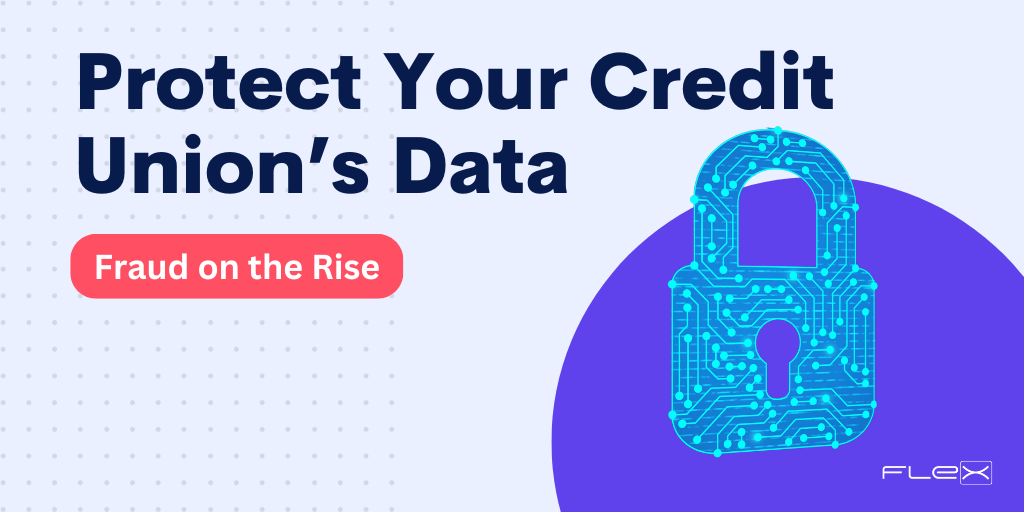Uncover the Top 5 Fraud Schemes and Proven Defense Strategies
.jpg?width=300&height=200&name=bigstock-Businessman-Holding-Shield-Pro-475988327%20(1).jpg) As the financial world becomes increasingly digital, fraud in all its forms is on the rise. This is especially true for credit unions, which are often targeted due to their perceived lack of security when compared to their larger counterparts.
As the financial world becomes increasingly digital, fraud in all its forms is on the rise. This is especially true for credit unions, which are often targeted due to their perceived lack of security when compared to their larger counterparts.
While there are many fraudulent schemes that are unfortunately common for credit unions in particular, there are also a number of proven defense strategies that can help stop them in their tracks.
Unveiling Alloy: Your Key to Strengthening Defense Against Fraud through Identity Verification
Keep Reading For:
1. Synthetic Fraud
Problem: An example of synthetic fraud would be a situation where an attacker uses actual data like a social security number, combined with fraudulent data like a fake name, to sign up for a financial account with a credit union.
Solution: To avoid the hassle of this while also increasing security for members who don't want to see their identities compromised, credit unions should employ advanced identity verification tools that proactively monitor for suspicious activity at all points on the member journey, not just at the beginning.
2. Social Engineering
Problem: Social engineering is another unfortunately common type of financial technology fraud that credit unions are likely to face. Here, a rogue actor will trick a target into handing over sensitive information like account passwords, bank information, and more--all of which will then be used to transfer funds or steal other sensitive data.
Solution: Education is absolutely the best defense against social engineering--full stop. If you don't want people to accidentally hand over bank account information, they need to be educated about why this happens, what it looks like when it happens, what they should do if they feel like they're in this type of situation, etc. Arm them with the tools they need to defend themselves. Your credit union should create educational content that your members can refer to about these types of attacks moving forward.
3. Presentation Attacks
Problem: Presentation attacks have become increasingly popular over the last few years and often involve bypassing "sophisticated" security measures like photo ID verification, biometric verification, and more. If an attacker is trying to gain access to an account that uses facial recognition, for example, they may be able to get in using a high-quality digital image obtained online.
Solution: To adequately protect its members, a credit union must mount a strong defense against presentation attacks. This includes not only multiple forms of data validation but also things like secure identity verification systems like Alloy as well.
4. Phishing
Problem: Phishing is similar in concept to social engineering in that a target is being tricked into giving up sensitive information or performing a specific task. A credit union member thinks that they're getting an email from a relative asking them to quickly transfer a large sum of money--in reality, that email is fake and they're sending money to someone halfway around the world they've never met before. Money they'll never get back.
Solution: Again, education is of paramount importance. Let people know that if your credit union needs to contact them about something like a loan or credit line, you will never do so in certain ways that attackers are likely to use. You would probably never ask for account numbers over text message, for example.
5. ACH Fraud
Problem: Finally, credit unions and their members often have to deal with ACH fraud, which is often possible due to the long processing times that ACH transfers are known for.
Solution: Here, switching to a more secure system like FedNow that allows for real-time payments can help with not only fraud detection and prevention, but can also close the loophole that a lot of these attackers are using to begin with (the long processing times).
Strengthening Your Defense Against Fraud
With fraud on the rise and consumers losing over $8 billion in 2022, it is crucial for your credit union to stay vigilant and continuously monitor activity to prevent scams. By implementing the solutions mentioned above, you not only stop fraudsters in their tracks but also gain the trust of your members. Embrace fraud prevention and detection measures as a long-term solution in this ever-evolving digital era.
Introducing Alloy, Your Partner in Identity Verification and Fraud Prevention
At FLEX, we understand that fraud is a serious concern for your credit union and its members. That's why we're constantly taking steps to make sure you have access to the resources that you need to take a proactive approach to the situation. Our recent partnership with Alloy is a prime example. To find out more about what Alloy can do for you in terms of identity verification and other fraud prevention measures, click the button below.



